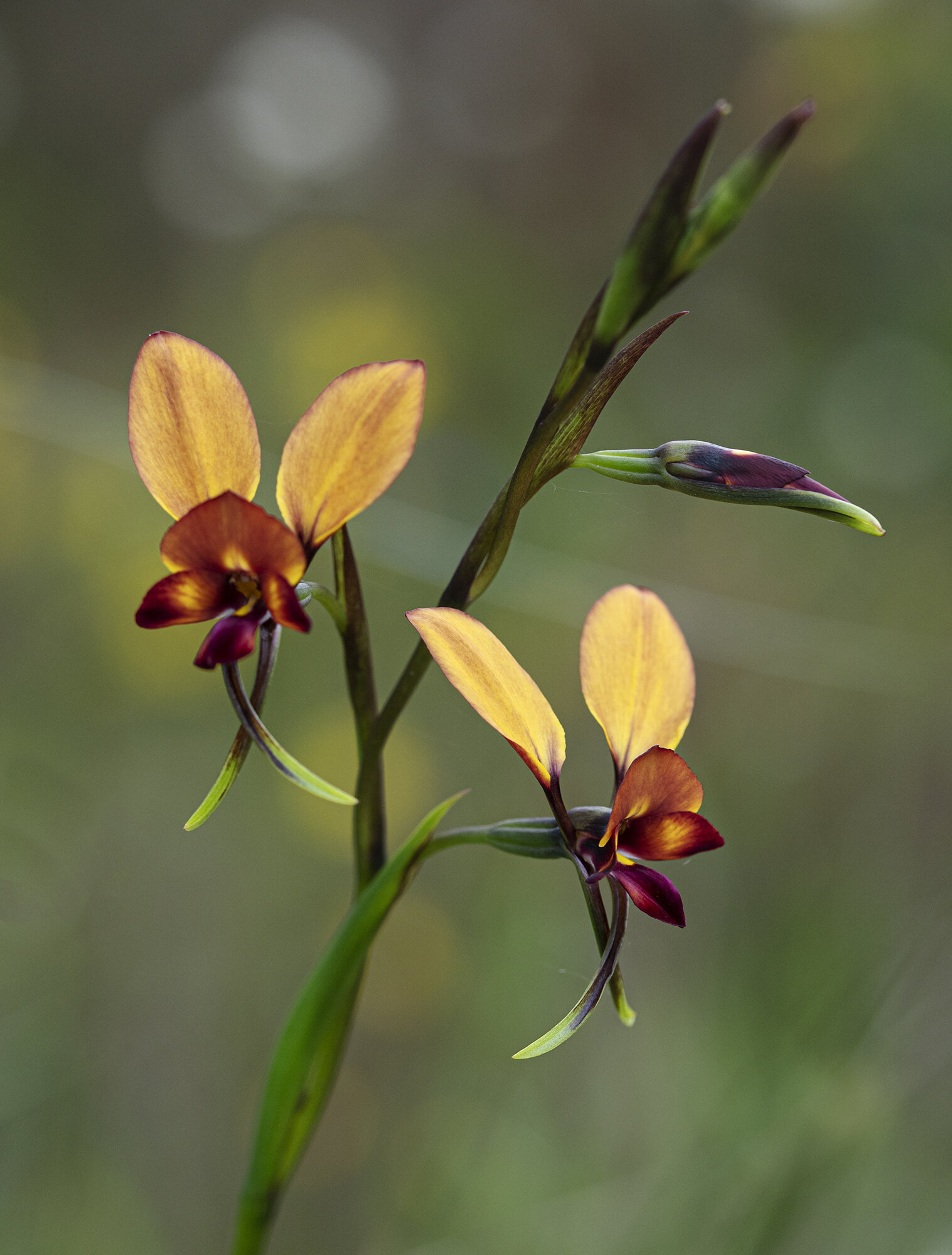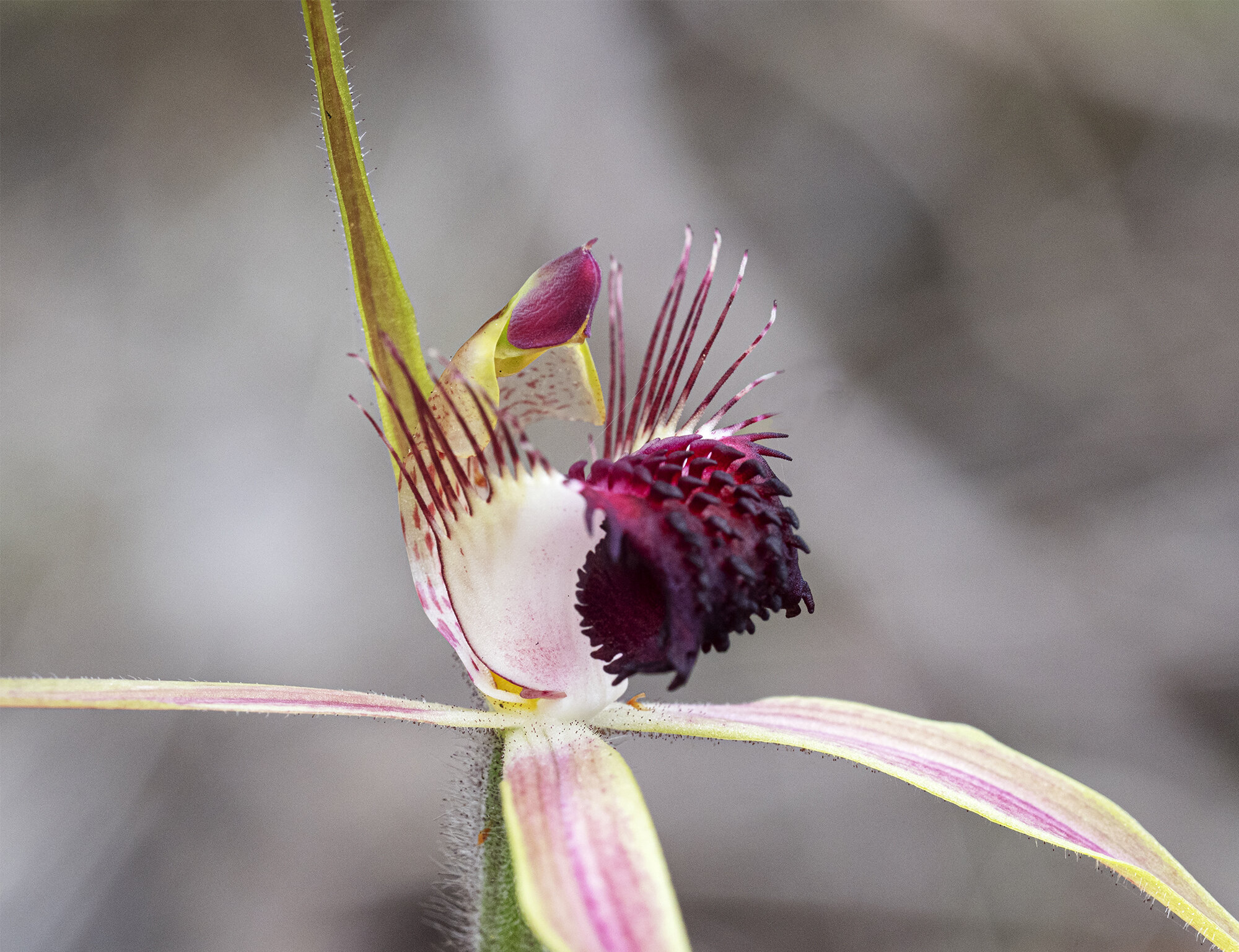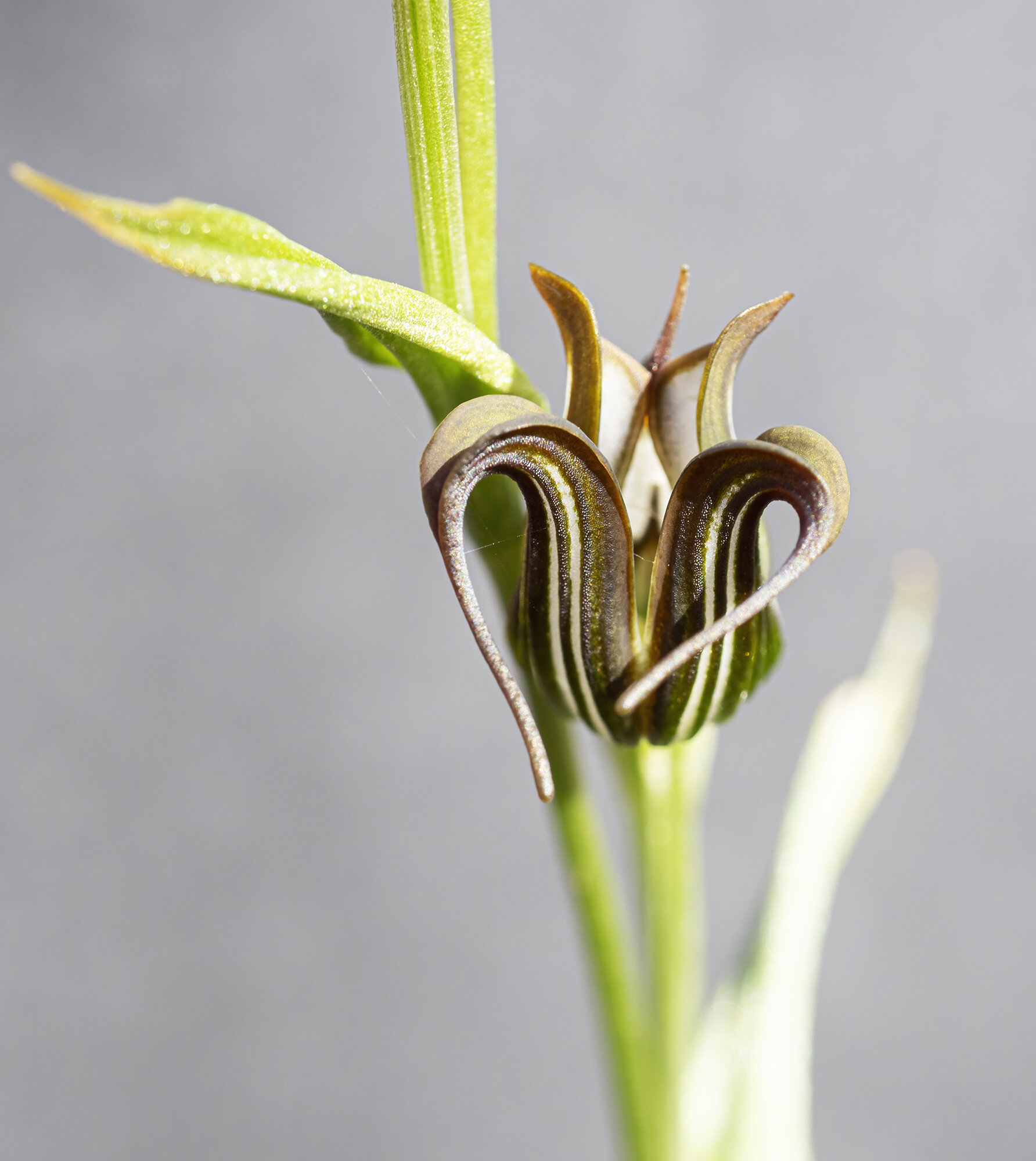Orchids from Down Under
GUEST BLOG - Orchids from Down Under
by
Julie Knight
The recent Wild Read series on the orchids of the UK, inspired me to share some of the many species we have in Western Australia, of which there are around four hundred. I have photographed only a meagre handful of these unique, and often tiny flowers, growing in the sand and leaf litter of the bush, but I hope that you will enjoy the selection. The descriptive captions for the photographs were gleaned from various sources on the internet and have been kindly edited by Rob Read.
Above: Donkey Orchid. ©Julie Knight
Donkey Orchid Diuris sp. There are around 60 species of orchid in the genus Diuris, referred to collectively under the common name of Donkey Orchid. Diuris means double tail and refers to the hanging lateral sepals. However, the orchids are more readily recognised by their ear-like petals which lead to the common name of Donkey Orchid. They are coloured like flowers that attract pollinating insects such as wasps, bees and flies, but no plant in the Diuris genus produces nectar and very few have a scent. It is thought that Diuris species deceive insects by falsely advertising the presence of food and this hypothesis is supported by experiments.
Above: Spider Orchid. ©Julie Knight
Above: Cowslip Orchid. ©Julie Knight
Spider Orchid Caladenia discoidea, commonly known as the dancing spider orchid, antelope orchid or bee orchid is a species of orchid endemic to the south-west of Western Australia. It is distinguished by its horizontally arranged flowers and unusually short sepals and petals
Cowslip Orchid Caladenia flava, is a species of orchid endemic to the south-west of Western Australia. It is a relatively common orchid with a single, hairy leaf and up to three yellow flowers which often have red markings.
Above: Purple Enamel Orchid. ©Julie Knight
Above: Pink Fairy Orchid. ©Julie Knight
Purple Enamel Orchid Caladenia brunonis, is a plant in the orchid family Orchidaceae and is endemic to the south-west of Western Australia. This genus contains two species, both of which have bright petals with a shiny appearance like enamel. The Pink Enamel Orchid Caladenia emarginata, is the larger of the two with flowers up to 5cm. An interesting feature of these flowers is that the underside is as beautiful as the top side of the flowers.
Pink Fairy Orchid Caladenia latifolia. Common in coastal areas from the WA South Coast to Central West Coast, this orchid frequently forms colonies in deep leaf litter often associated with peppermint trees (Agonis flexuosa). This small tuberous perennial herb is 20–45 cm high with hairy, bright green leaves.
Flying Duck Orchid Paracaleana sp. These small orchids are a group in the genus Paracaleana and resemble flying ducks, hence the common name. Owing to their small size (1-2cm) and drab colour, are generally difficult to locate. As a group, they are relatively common throughout the lower south-west and out toward the western wheatbelt. They prefer the same conditions as the hammer orchids, in sandy clearings, and are often found growing together.
Above: Flying Duck Orchid. ©Julie Knight
Above: Jug Orchid. ©Julie Knight
Jug Orchid Pterostylis recurve, is a plant in the orchid family Orchidaceae and is endemic to the south-west of Western Australia. A relatively common species which occurs in woodland, scrub and in shallow soil on granite outcrops. It gets its common name from the jug-shaped flowers which are white and marked with green and brown lines
King-in-his-Carriage Drakaea glyptodon. This is a species of orchid endemic to the south–west of Western Australia and is found in sand or gravel soils close to swamps. It is pollinated by a single species of male thynnid wasp using sexual deception. The orchid's labellum is similar in shape and scent to a flightless female thynnid wasp.
Above: King-in-his-Carriage. ©Julie Knight
Above: Red Beak Orchid. ©Julie Knight
Red Beak Orchid Pyrorchis nigricans, are widespread throughout south western WA, and can also be found in parts of New South Wales, Victoria, Tasmania, South Australia and the ACT. Although they are common and found in a variety of habitats including woodland and heathland, red beaks usually only flower in response to a scorching by a summer fire.
Julie Knight. September 2021.










